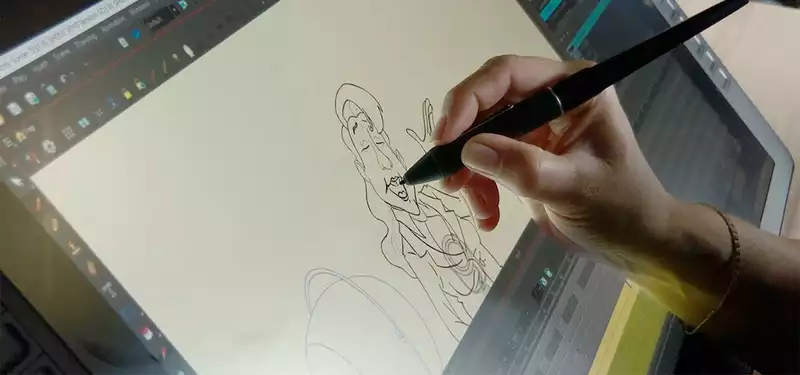Mar 21, 2023
Watch: an exclusive look at the making of the Norwegian hand-drawn feature film "Titina" with director Kayla Ness
We have been following Kaisa Ness' hand-drawn feature film Titina for several years and are pleased to be able to release an exclusive making-of featurette.
Titina is currently touring film festivals. The film just finished screening at the New York International Children's Film Festival and received an Award of Excellence at the Tokyo Anime Awards Festival. The film's producers, Mikrofilm from Norway and Vivi Film from Belgium, were also nominated for the European Producer of the Year Award at the Cartoon Movie Pitching and Co-production Forum in Bordeaux, France this month.
In addition to sharing behind-the-scenes video, Kearns joined Cartoon Brew to talk about developing the film's look, the history of animation, and adding lightness to a down-to-earth story.
Cartoon Brew: In telling a true-to-life story, we faced the challenge of animating real people from history.7]
Kajsa Næss: The main characters, most of the Norwegians, and the crew of the airship are modeled after real people. It was important to keep them relevant. We wanted them to be recognizable. For this reason, we worked with Siri Dokken as character designer. She is a well-known cartoonist in Norway and her caricatures are amazing. Her drawings have personality and emotion. The characters she draws are voluminous, lively, and you can see the story. She has an excellent eye for seeing the flaws and small emotional soft spots in her characters. Characters are never just one thing. She had never worked in animation before, but I had no doubt that she could pull it off, and I had no doubt that she couldn't.
In fact, the character was the first thing we developed and used to get funding and financing. It worked out very well. Then our art director, Emma McCann, did a wonderful job of styling the character. Her fine lines and beautiful swirls match Siri's character so well, and I think it's a great fusion of the two.
As you say in the video, it's hard to say how much of the story is true and how much is myth. 13]
I wanted to tell this classic tale of a heroic expedition from the perspective of a new woman. I wanted to take this strange and rather sad tale and make it warm, yet sharp and entertaining. We wanted to play with the ideas we have about history, ambition, and figures from different cultures, about heroes, villains, and ordinary people being told about. We are used to heroic and sad stories, but we wanted to mix the two and question the heroic story a bit. (In Norway, Roald Amundsen is one of the biggest heroes. No one messes with him.) Fascists had to be fun, but at the same time they had to be evil. It also had to be a little dangerous. Not just stupid.
As usual, some parts we expected to be difficult were easy, and some parts we thought would be easy were quite painful. There was a fairly advanced split-screen scene that required a lot of planning and I was very nervous about the timing and whether I could do it as expected. However, the layout and posing departments prepared and resolved the technical aspects very well, and once the animators started the scene, beautiful animation overflowed. We also got a lot of very good references from the actors to inspire the animators. Good planning was very helpful in the end.
Other parts of the film may be more difficult. For example, scenes that have very little action but require a lot of acting and emotion. We asked the animators to make very small adjustments, to remove large movements, and to trust the audience and the mood of the scene. Sometimes it is difficult to find humor in a small, underrated story before seeing it in sound and context. Moving characters is in the animator's blood, and I needed to be confident that it would work in the beginning.
Can you talk a little more about it? The film is rooted in reality, but has a playfulness and humor that is best expressed in animation.
I worked with animation director Marie-Laure Guise to come up with this style. When we began developing the film, we were inspired by live-action directors like Wes Anderson, Jacques Tati, Federico Fellini, and Yasujiro Ozu, as well as animated films like "Porco Rosso" and "Ernesto y Celestine. In my opinion, all of these filmmakers interweave realistic storytelling with magical moments and human encounters. They use framing, pacing, and color to draw the audience in.
I always like to mix realism with comedy/cartoon animation. I want my animated films to have a connection to reality and make the audience feel that the story is about real people, about us, the audience. I want the audience to recognize themselves in the stories I tell. I like to express the fragility of us and our characters. We all have little flaws that we try to hide or overcome.
.



Post your comment